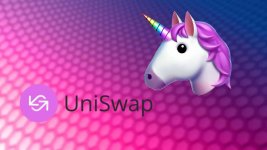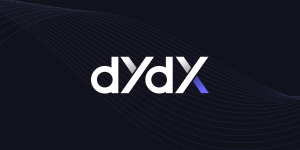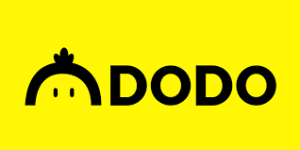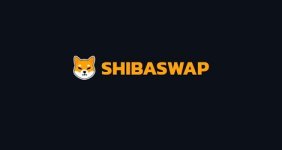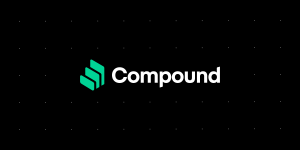Catalog of popular decentralized cryptocurrency exchanges (DEX).
Decentralized exchanges operate on the basis of blockchain, have no single regulatory body and operate on the principle of P2P, do not require registration and do not store user funds, as assets are stored on electronic purses with private keys. Therefore, there are no financial risks in a hacking attack or a stock exchange crash, and there is no possibility of leaking personal information. Traders are fully responsible for their assets. The catalogue is based on CoinMarketCap and CoinGecko ratings.
1) Uniswap
Uniswap is a decentralized exchange (DEX) based on "Ethereum" blockchain. The exchange uses an automated liquidity protocol.The key features of Uniswap are "Swap" and "Pool". "Swap" allows trade in ETH and ERC-20 tokens. Through the "Pool" function, exchange users are rewarded by providing liquidity.
Liquidity providers on Uniswap can create matching contracts for any ERC-20 token. The exchange calculates the exchange rate according to a special formula. The fixed Uniswap commission for the transaction is 0.3%.
Discussion
2) PancakeSwap
PancakeSwap is a decentralized exchange based on Binance "Smart Chain (BSC)" blockchain. The platform uses an automated model of a market maker. Through Swap users trade tokens BEP-20 and Binance Smart Chain. The possibility of pharming and steaking is realized.On PancakeSwap users trade against the pool of liquidity. Pools are filled with the funds of the exchange users. In exchange, users receive a Liquidity Provider (LP) token. These tokens can be used to recover their share and parts of the trade commission.
PancakeSwap token - CAKE. Inside the platform is used for pharming, steak, lottery, and NFT profiling. There is also an opportunity to earn money on BNB/USDT price forecasting and it is possible to store and sell collectible NFT cards.
Discussion
3) SushiSwap
SushiSwap is a decentralized exchange based on Ethereum blockchain. The Exchange was created by Uniswap developers. The SushiSwap platform is functionally identical to the second version of Uniswap.The key difference is that the SUSHI exchange’s own token accumulates value.
Early users of SushiSwap are considered to be the most important participants in the protocol. Therefore, when withdrawing funds from the pool, they continue to receive passive income. Over time, the reward, without adding liquidity, is diluted.
To become a liquidity provider, you need to block your own tokens in a smart contract. Blocked tokens are pooled into liquidity pools. On SushiSwap, a similar pool with a new cryptocurrency can be opened by any user.
Transactions can be made between any ERC-20 and ETH tokens. The transaction fee is 0.3%. Directly to the pool of liquidity is 0.25%. The remaining 0.05% is converted to SUSHI and distributed among token holders.
Discussion
4) 1inch
1inch is the aggregator of decentralized exchanges. It is based on Ethereum blockchain. The platform was created to merge all large DEX into one network with liquidity and prices to simplify transactions (sometimes on decentralized exchanges it is problematic due to low liquidity and thin book of orders).
1inch allows to split transactions between different decentralized exchanges in order to minimize slip and get the best price. Liquidity and exchange rates of multi-dex exchange exchange offer on one board. You can trade Ethereum and ERC-20 tokens.
The 1inch Exchange function allows you to put out limit bids. Interactive Price Chart, Active Request tab and Order History tab are implemented. This is the key difference of 1inch from most decentralized exchanges: the user gets tools for market analysis, risk management and order tracking.
Discussion
5) dYdX
dYdX is a decentralized exchange based on Ethereum blockchain. The key difference between an exchange and other decentralized sites is the possibility of margin trading and trading of perpetual futures. On the exchange, you can exchange, borrow and repay all the assets supported.At the dYdX margin, you can borrow up to 5x. Available pairs - ETHDAI, ETHUSDC, DAIUSDC. Indefinite futures are only available for a pair of BTCUSDC with a credit shoulder up to 10x. Credits are provided in ETH, DAI and USDC. Start LTV is 75%, liquidation begins at LTV 85%.
dYdX aggregates spot and credit liquidity from several decentralized exchanges. Users can track portfolio performance. Deposits to ETH, DAI and USDC are also possible. There is no minimum term for deposits. Interest on deposits is accrued immediately, approximately every 15 seconds (each block).
Discussion
6) Curve Finance
Curve Finance is a decentralized exchange based on Ethereum blockchain. The exchange has 7 pools of liquidity. Some are equipped with a credit protocol. Credit protocols operate in the background. They allow interest to be earned for adding liquidity to the pool.
Interest rates are not fixed and may vary depending on the market situation. This is the case for all decentralized exchanges. One of the key features of Curve Finance is trading stablecoins. The platform uses algorithms designed specifically for stablecoins. Their main advantages are low commission and minimal slipparage.
Discussion
7) Serum Dex
Serum Dex is a decentralized exchange based on Solana (SOL) blockchain. The platform is compatible with Ethereum and Bitcoin. The project has its own token SRM. It has been listed on such exchanges as FTX, BitMEX, HBTC, 1inch, etc. The FTX Exchange is one of the initiators of the Serum Dex project.
Serum Dex has a decentralized oracle. The commission for transactions is lower than in earlier blockchain networks. The transaction execution speed is higher. Serum Dex has released its own tokens - SerumBTC, SerumUSD, and a token control - for interacting with other blockchain networks and internal regulation. SerumBTC is tied to Bitcoin. Stablecoin SerumUSD has the ERC-20 standard and is used for crossover contracts. The control token is analogous to BNB. It offers discounts on trading commissions.
Discussion
8) DODO
The decentralized DODO Exchange uses multi-chain architecture. The exchange can be used via Ethereum, BSC, Polygon and Huobi ECO Chain networks. Tokens in the ECR-20 format are supported. DODO uses a proactive marketer maker (PMM) system implemented via a blockchain oracle. This system is used to reduce commissions and increase the speed of transactions.The DODO Exchange has an exchanger, liquidity pools, crowdpulling, meening (steaking) stablecoin and DODO. DODO - the exchange’s own token. Token holders receive a percentage of the exchange’s trading fees and can participate in a steak under the Proof-of-Membership protocol.
Discussion
9) Aave
Aave is a decentralized Ethereum-based blockchain exchange that serves as a credit protocol. In lending and lending, Aave users can also use the Polygon blockchain network. Credit and deposit on Aave platform realized through liquidity pools. Depositors block funds in the pool, for which they receive interest and part of the commissions. Borrowers draw their funds from these pools. To participate in lending, a deposit must be made.To use the Aave Swap Exchange, you must open at least one deposit on the platform. By doing so, the exchange increases liquidity and reduces the risk of slippage. In addition to lending, depositing and exchange, a AAVE and BPT stacking token is available on the platform.
Discussion
10) ShibaSwap
ShibaSwap operates in the Ethereum blockchain network.The Exchange’s ecosystem is based on three tokens ECR-20: SHIB, LEASH and BONE. SHIB token is the main asset of the calculation. It is used for trade, settlement and storage.
In addition, liquidity pools are available on ShibaSwap, farming and steaking are implemented. The LEASH token is used to work with farming pools. BONE serves as a reward for supplying liquidity, pharming, and steaking pools and acts as a token control. ShibaSwap is a classic DEX exchanger. It only supports ERC-20 tokens.
Discussion
11) Compound
Compound is a credit and lending platform based on Ethereum blockchain. Credit and lending services markets operate through liquidity pools. The platform is supported by the COMP service token, which is also used as a control token.Currently, Compound has 10 markets in liquidity pools. The list is gradually being expanded through decentralized voting. New tokens are integrated into the Compound protocol via a smart contract with Tokens. A smart contract creates an analogue to the cryptasset used in Compound. The user fee is based on the difference between the base token rate and cTokens. The amount of the award depends on the amount of the deposit.
Discussion
12) QuikSwap
QuikSwap operates in the Polygon blockchain network based on the Ethereum infrastructure. ERC-20 tokens are traded on the platform. Currently, QuikSwap has more than 100 tokens and about 200 pools of liquidity available.QuikSwap liquidity providers are rewarded with token exchange fees. Funds are allocated according to the QUICK share of each supplier.
The Pharming Pools provide the opportunity to earn on the Proof-of-Stake protocol and provide loan funds. By staking QUICK tokens, users receive dQUICK tokens, thereby increasing their share in the liquidity pool. QUICK holders can also take part in the management of the community.
Discussion
This catalogue does not represent all decentralized exchanges, but only the main ones.
DeFi is an area that is growing in popularity. In addition to decentralized exchanges, new users are attracted to the cryptocurrency market by collector NFT tokens and blockchain games.
Last edited:

